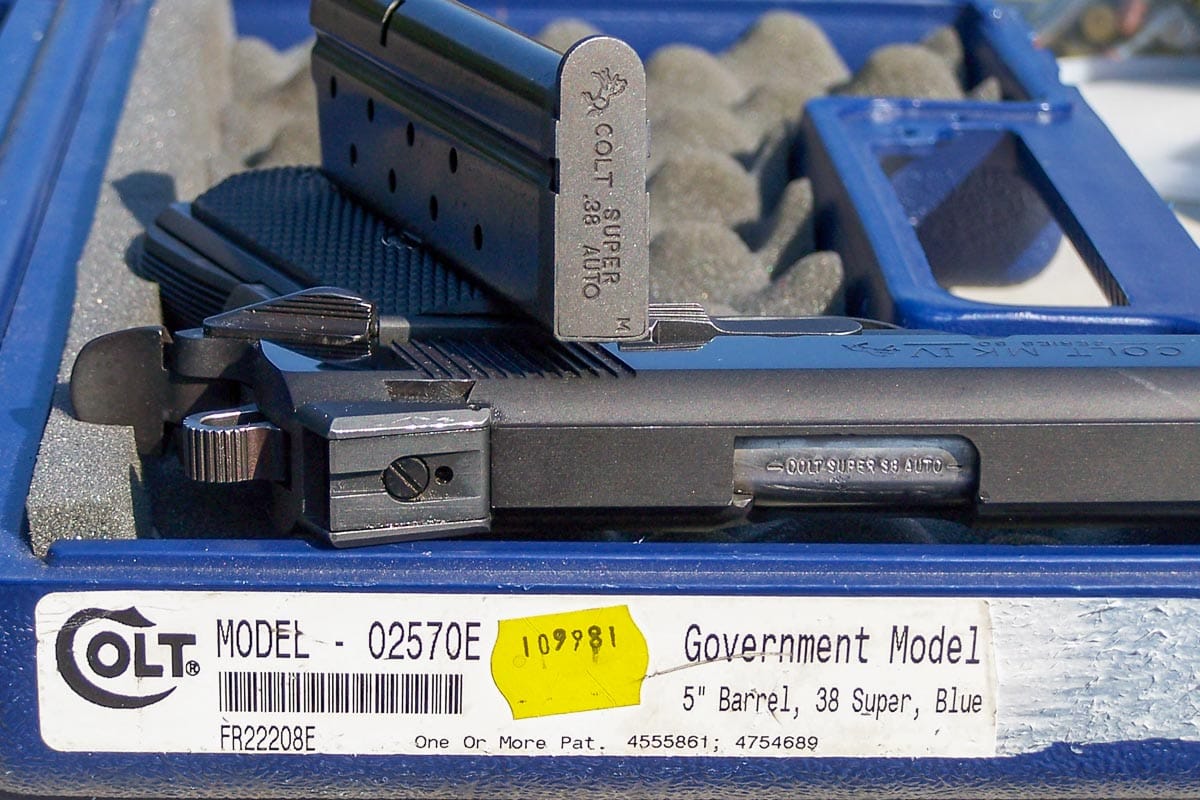Firearms journals seldom touch on “alternate history,” on how much things might have changed later if this or that had occurred at an earlier time. Let me offer an example.
For a very, very long time up until recent years, the 9mm Parabellum (9mm Luger, 9×19) was seen as a weak sister with feeble “stopping power” and the .45 ACP was seen as a benchmark of adequate defensive handgun potency. No one man was as responsible for that perception as Lt. Col. Jeff Cooper, USMC (ret.). He postulated that the .45 was about twice as likely to stop a violent attack than a 9mm, and said that collected “sea stories” predicted a one-shot stop with .45 hardball 19 times out of 20.
We know now that he was optimistic with his last statement, but his influence remains strong despite the insistence of FBI, some ammo companies, and many credentialed authorities that “all service pistol calibers are roughly equal” in that respect. As we compare the two viewpoints, we have to remember that in Jeff’s formative years full metal jacket “ball” ammo was the standard in both calibers and that the advances in ammunition in the last forty or so years have closed the gap between “medium bore” bullets like the 9mm and “large bore” bullets like the .45.

Col. Cooper was the high priest of the .45, and the godfather of the powerful 10mm Auto. But as we look at his collected writings, we find that he just might have been open to an improved mid-caliber pistol, analogous to some of today’s most advanced 9mm ammo.
In His Own Words
Cooper himself had a soft spot for the .38 Super cartridge early on, and later did experimentation with a hyped-up 9mm cartridge that never came to fruition. In his 1958 book “Fighting Handguns,” he wrote on Page 119, “The Super shoots flat and accurately, and is about the only auto pistol I like to use for trail work on small game and varmints. With the now unobtainable hollow point bullets it kills very well on medium-sized animals and, I assume, men.”
On Page 65, Cooper noted, “Since stopping power is the main reason for a business pistol, the Super .38 became something of a special purpose weapon. Its special purpose was (and is) to serve as a sporting arm for those who carry the .45 habitually for combat work. On a fishing or camping trip, the Super will shoot rings around the .45 at such informal targets as crows, chucks, or an occasional coyote. Only full metal-cased bullets are commercially loaded at this time in this cartridge. They are terrible on small game – I once shot a marmot three times with them fairly through the chest before he reached his hole and fell in. He died within reach or I never would have been sure I’d hit him at all. So I treasure a reserve of hollow points which are the last available.”


The good colonel once noted elsewhere that people seemed to buy 9mms for the gun features and .45s for the cartridge’s stopping power. He was quite partial to the Browning Hi-Power and lamented that it was not made in a more potent caliber than 9mm at the time. On Page 69 of “Fighting Handguns,” he wrote, “…the P-35 holds 14 rounds when fully loaded — 13 in the magazine and one in the chamber. This is a spectacular advantage in a combat situation and I find it hard to understand why it is not used on every self-loader in production today…Another strong point of the ‘Belgian Browning’ as it is sometimes known is a fine, comfortable grip, which fits my hand, for one, better than any of the other ‘stock’ pistol grips.”

Hypothetically Speaking…
Our opinions are largely shaped by our own experiences, and the experiences of those we trust and/or admire. Cooper was well aware that Alvin York had dropped half a dozen German soldiers with as many single body shots from his 1911 .45 in WWI. Jeff had killed three enemy combatants with one chest shot apiece: one with a .45 Colt caliber Single Action Army and one each in the Pacific Theater and Southeast Asia in the next conflict with a 1911 and .45 ACP hardball.
Suppose that the hollow point .38 Super loads Cooper said he “treasured” had been effectively duplicated in 9mm in his formative years. A 130-grain .38 Super runs at 1275 feet per second (fps) velocity for 468 foot-pounds of energy (fpe), and a 115-grain bullet at 1300 fps for 431 fpe according to the authoritative text “Cartridges of the World.” 9mm Luger cartridges such as the Federal 9BPLE developed for the Illinois State Police exactly duplicate 115-grain bullets at 1300 feet per second, and as ISP and countless other agencies proved, they were dynamically effective in actual gunfights. The Winchester Ranger-T, with a 127-grain high-tech expanding bullet, are spec’d for 1250 fps out of a 4” barrel and is known to hit 1300 out of longer barrels. That’s right square in .38 Super country: the sort of ammo Cooper “treasured,” with the kind of pistol that fit his hand perfectly and the cartridge capacity he himself dubbed, as seen above, a “spectacular advantage in a combat situation.”

Put it all together. That superior ammo was available when Jeff Cooper was still alive. Alas, it is human nature to stay with what we have come to trust and even identify with.
Offered for discussion and consideration: If Jeff Cooper had been able to see the effectiveness of modern 9mm ammunition, might he have changed his recommendation to a 9mm pistol, properly loaded, with the most modern ammunition? And might his great influence have brought today’s 9mm pistols to their current level of dominance even sooner?


